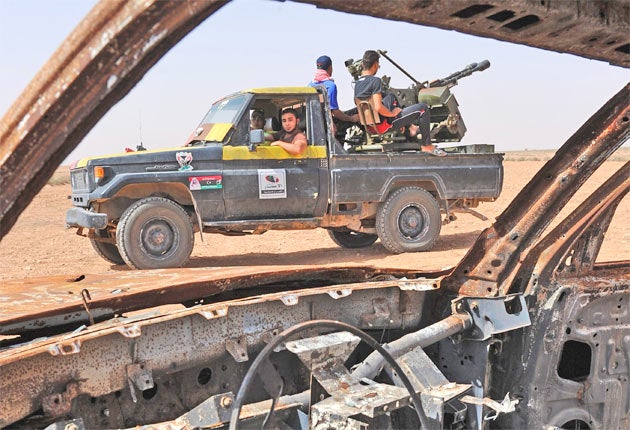Gaddafi's ransacked arms depots set alarm bells ringing in the West

The long metal crates strewn on the ground at the warehouse were empty. Hundreds of surface-to-air missiles, coveted by terrorist groups and "rogue states", had disappeared in the past few days, looted from one of Libya's overflowing arms dumps.
Among the missiles taken away were Russian-built SA-24s, designed for use against modern warplanes. The US had been attempting to prevent these falling into Iranian hands. Older SA-7s and 9s, capable of bringing down commercial airliners, are sought after by al-Qa'ida.
As Libya's bloody civil war reaches its conclusion, the myriad of bunkers and barracks containing the regime's weaponry, from Kalashnikovs to missiles, armoured cars and tanks, have been left unguarded. Many have been stripped bare by militia fighters and the general public.
The numbers involved are far larger than the caches that armed insurgencies in Iraq and Afghanistan.
What's more, unlike those two fronts of the "war on terror" there are no foreign troops present in Libya to stop these weapons falling into undesirable hands. The opposition forming the new government have their resources tied up attempting to subdue the remaining loyalist strongholds and repairing infrastructure, rather than safeguarding the arsenals.
The ransacking of the depots has set alarms ringing among security agencies in American and Europe.
The SA-24, "Grinch" surface-to-air missile, which is also known as the Igla-S, targets fighter-bombers, helicopter gunships and even cruise missiles, and can strike as high as 11,000 feet. Washington had lobbied the Russians to block sales to Hugo Chavez in Venezuela as well as to Tehran.
The SA-7s and 9s are older variants but can destroy civilian jets and be used against military targets such as drones increasingly used by the US.
Peter Bouckaert, emergencies director for Human Rights Watch, charting the arms depots, said: "The problem is pretty huge. There are around 20,000 surface-to-air missiles in Libya and a hell of a lot of them are missing.
"The Western agencies are obviously pretty concerned about what's going on. This lot can turn the whole of North Africa into a no-fly zone."
Join our commenting forum
Join thought-provoking conversations, follow other Independent readers and see their replies
Comments
Bookmark popover
Removed from bookmarks